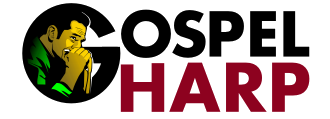How To Play a Single Note on Harmonica
One of the first things you need to do when learning to play the harmonica is play single notes. In fact one of the easiest ways (and I mean relatively easy” to separate yourself from very new players is to learn how to play single notes.
I remember just playing some folk tunes and folks came to me and said, “My father plays harmonica too, but I can’t always make out the tune he is playing.” After a little talking to her, I realized the issue was her father only learned to play chords and never could get the single notes out.
So if you want to separate yourself from very new players, you want to learn this skill.
OK…how do you do it?
Well there are essentially 3 methods of doing it. There is some form of the “Lip-Block Method” which is often called “Pucker.” There is the “Tongue Block Method” which is gonna get you on the road to playing lip slaps and other cool tricks from the Chicago Blues. And then there is the “U-Block Method” which I have not seen anyone suggest.
Let’s take a look.
U-Block Method
OK, let’s just get this one out of the way right now. Here you roll your tongue together on the sides and blow through your tongue like a straw as it only leaves an opening for one hole.
Yep…It is hard. I only tried it a few times, never got the hang of it. And I haven’t seen anyone really suggest doing it. Just forget this method that I have included just so that I can hit all of them.
Lip-Block Method
OK. This is the method that you will probably use at least initially. Here you use your lip to block out the other holes so you only blow through the hole that you want to hear.
So if you want to blow the hole 3, you put your mouth on the harp over holes 2,3, and 4. At the same time you block holes 2 and 4 with your lip. So when you blow only hole 3 sounds.
OK….Now a lot of people talk about this simple concept in different ways. And thinking about it differently may help you understand.
One way of thinking about the “Lip-Block Method” is a “pucker.”
I remember asking Todd Parrot how do you do the lip block? he said, “Just pucker.” So this approach thinks about lip-blocking by puckering out the notes that you don’t want to hear.
That’s cool. And it may work for you. I did this at first and did get a decent sound, but thinking “pucker” in my head caused my mouth to get too tight. That tightness caused me to tire. I needed to be more “Relaxed.”
Thinking “pucker” caused me to be too tight. So I needed to to something else.
Now another way of thinking about the Lip-Block Method” is a tall oval.
Here you are thinking about creating a tall oval (or vertical slot) in your mouth. So the height of the oval you create in your mouth is taller than it is wide.
Now here the sides of the oval will block out the notes you don’t want to hear, but the top and bottom of the oval will give you the full hole that you want to hear. Now thinking about the lip block like this helped me to not be so tight, but it still was a bit of a challenge to get it just right.
Harp Into the Lip Method
Now then I got introduced to J.P. Allen’s work. Here you put the harp right into your lip. And interestingly as you move the harp it will let more of the hole you want to be open enough to get air through it. Allen calls this the “Deep Relaxed Embouchure.” It is relaxed. And that relaxed nature of the method allows you to play longer.
Now again this is just another way to think about “Lip-Blocking.” I could be wrong, but I think essentially all of these embouchures are rally the same we are just giving you approaches to think about it to make it easier to get started.
Here is Allen Describing that Method. And this method helped me more than any other to get started.
The Lip-Block method is the first method I would suggest trying. But don’t stop there. As soon as you get it. then move on to the next method which is
Tongue-Block Method
The Tongue Block Method is where you use your tongue to block out the holes you don’t want to play. So lets say that you want to play the hole 4. You put your mouth over holes 1, 2, 3, and 4 and you use your tongue to block out holes 1, 2, and 3. Now when you blow only hole 4 comes out.
Now what is cool about this method is that you can do more than that. Let’s say you want to play holes 3 and 4. Now use your tongue to block out holes 1 and 2. That’s cool. But you can do that with Lip-Block as well.
But what if you want to play holes 1 and 4. Tongue blocking allows you to use your tongue to block holes 2 and 3 and leave holes 1 and 4 open. So now you got something that can’t be done on with Lip-Block.
Another thing you can do are Tongue slaps. Here you let a little wind go through before you put your tongue on the harp. So you want to tongue slap hole 4. You blow a little and quickly put the tongue on holes 1, 2, and 3. Kinda cool.
The tongue can give you a percussive kind of quality.
Another thing to keep in mind. Bending notes is a lot harder when tongue blocking versus lip blocking. At least it was for me. My bends are a lot clearer lip blocking over my tongue blocking, but like everything else it probably is just practice.
Now Ronnie Shellist was teaching me how you can get a simulation of this on the Lip-Block. Here you widen your mouth a little to add in air from other holes and then quickly shut it down to one hole. So it is possible to do simulations of some of these things, but theses approaches will always be slightly different than the tongue-blocked method.
Which One To Use?
Well there are essentially 3 harmonica embouchures. There is the U-Block that I you gotta go somewhere else to figure out. I haven’t had much success. There is the Lip-Block will get you going faster and thus I suggest running with that to begin. Go check out the Deep Relaxed Embouchure and get at it. And finally there is the tongue blocking. And if you are serious about the instrument you probably will be doing at least some tongue blocking. Now there are some great playing that doesn’t tongue block at all, but it does open up other sounds that you can play around with. So give it a try.
Now one thing to keep in mind. The Harmonica is easier than other instruments, but it is an instrument and thus shouldn’t be called easy as I wrote. Don’t expect any of these methods to give you clear single notes quickly. But, if you practice and take your time you will get it. Keep at it, Keep practicing.
There are no comments yet, add one below.


Leave a Reply